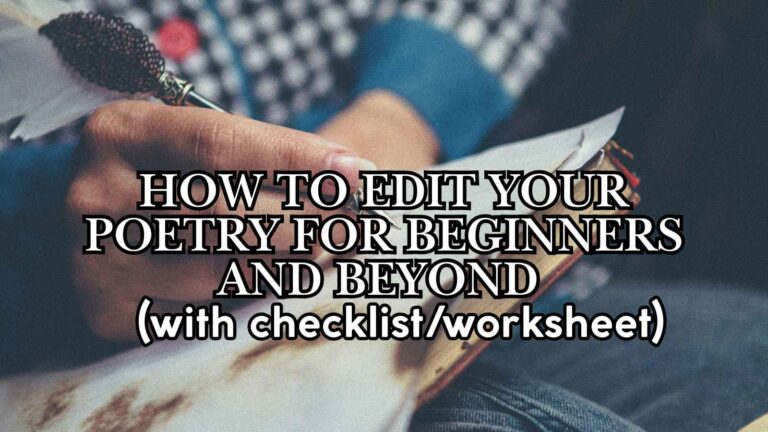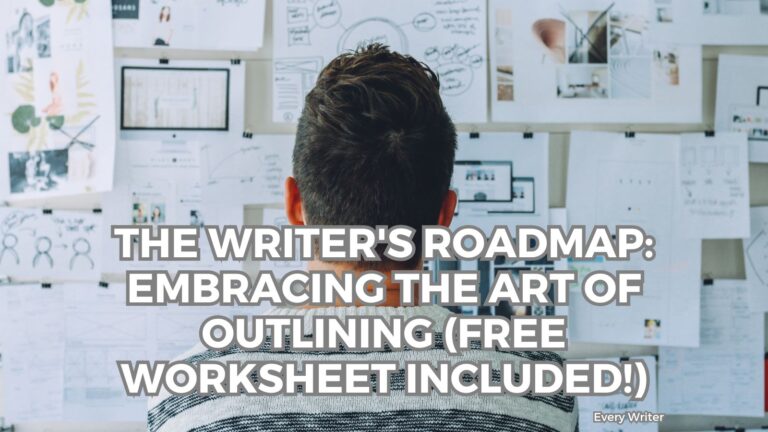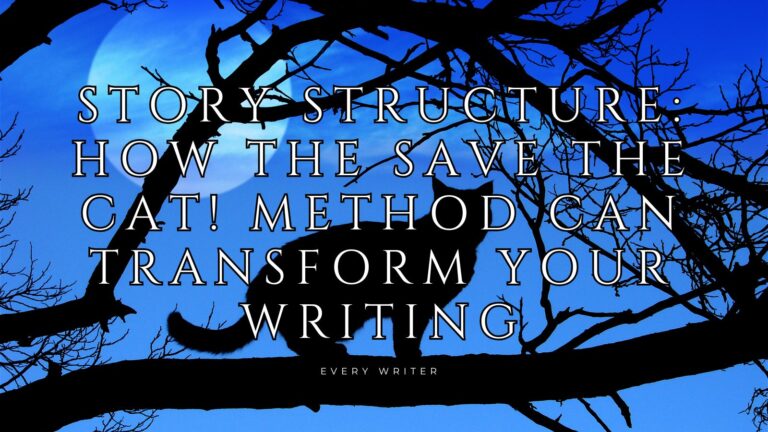How to Finish Your Novel!
Introduction: Why Most Writers Never Finish Their Novels
Notes: I’m recommending Scrivener because it genuinely helped me finish my writing projects after years of struggle. While this article contains affiliate links and I may earn a small commission if you purchase through them (at no extra cost to you), my endorsement comes from personal experience. I only share tools that have made a real difference in my writing journey and that I believe can help you too. All proceeds help Every Writer stay alive.
I struggled for many years to get projects done. I have a BFA in Creative Writing from Bowling Green State University and a Master’s in Education and I still find novel planning, organizing, and finishing very difficult. Scrivener helped me tremendously. It does much of the planning and organizing with you. It turns what can be a process of chaos into a well-organized and even enjoyable adventure. The software with all of its features is exciting to me. It motivates me to come back again and get things done.
Now I meet and talk to a lot of writers who are struggling to finish their novels. They start one project, get going with exuberance and then it seems to all fall apart after the first few chapters. This used to happen to me. Many of these writers have a dozen or more started but nowhere near completed manuscripts. If all their unfinished manuscripts were a single project, they would have a finished novel. They are stumped to understand why this happens, and I have to tell them honestly, writing a novel is hard work!
This pattern is incredibly common. The initial burst of creative energy carries writers through the exciting beginning stages—crafting characters, building worlds, setting up conflicts. But then something shifts. The path forward becomes murky. The writing sessions that once flowed freely now feel like trudging through mud. The project that seemed so brilliant in concept now feels unwieldy and impossible to wrangle. And slowly, almost imperceptibly, the manuscript joins the growing pile of abandoned stories.
What many aspiring novelists don’t realize is that completing a novel-length work requires more than just creativity and determination. It demands a structured approach to organizing complex narrative elements, managing research, tracking character arcs, and maintaining consistency across hundreds of pages. Putting all the pieces together and understanding the process is very difficult. We are not trained for it. Few if any university programs prepare students for long-form writing like this. Even MFA programs often focus more on craft at the sentence and scene level rather than the architecture of book-length projects.
So writers need help. They need systems that can grow with their projects, tools that can keep their research accessible, and methods that allow them to see both the forest and the trees of their manuscripts. What if I told you that the right software could transform your writing process?
What if the difference between an unfinished draft and a completed manuscript wasn’t just about willpower or talent, but about having the right tools to organize your creative vision?
That’s where Scrivener comes in—a writing platform designed specifically to address the unique challenges of long-form writing. And I’ve seen firsthand how it’s helped frustrated writers finally type those two magical words: “The End.”
Why Writers Struggle with Long-Form Projects
The Psychology of Novel Abandonment
Ask any writer with a drawer full of half-finished manuscripts what happened, and you’ll hear stories that all sound remarkably similar. The specifics vary, but the underlying psychology of novel abandonment follows predictable patterns.
The Overwhelming Scale of Novel Writing
First comes the overwhelm. What seemed manageable in the planning stages—writing 80,000 words or more—suddenly feels like scaling Everest with nothing but a walking stick.
The sheer scale of a novel-length project can be paralyzing. Writers look at the mountain of work ahead and think, “How can I possibly sustain this for months or even years?”
The blank page multiplies into hundreds of blank pages, each demanding to be filled with compelling prose.
The “Murky Middle” Problem
Then, usually somewhere around the quarter or halfway mark, writers experience a loss of narrative direction. The carefully plotted outline now feels constricting, or worse, the pantser approach that worked so well for the exciting first act now leaves them stranded in the murky middle.
Questions arise:
- “Is this story even worth telling?”
- “Am I going in circles?”
- “Have I written myself into a corner?”
Without clear signposts, motivation wanes and doubt creeps in.
The Complexity Management Challenge
Perhaps most challenging is the difficulty of managing the growing complexity. As the manuscript expands, so does the mental overhead required to keep track of it all.
- Characters must remain consistent across hundreds of pages
- Subplots need to weave together seamlessly
- That tiny detail mentioned in Chapter 2 needs to pay off in Chapter 27
- Research notes become vital but are scattered across multiple files
The cognitive load becomes overwhelming, and the writer’s brain, quite sensibly, begins looking for simpler tasks to tackle.
The Limitations of Traditional Writing Methods
Our conventional writing tools weren’t designed with the unique challenges of novel writing in mind. Most writers start with what they know: standard word processors like Microsoft Word or Google Docs.
These programs excel at linear document creation but fail miserably at managing the non-linear, organic process of creating a novel.
Why Word Processors Sabotage Your Novel
Linear writing in word processors forces writers to approach their novels from beginning to end—a method that works against most writers’ creative processes.
Want to skip ahead and write that climactic scene that’s burning in your imagination? You can, but then you’re scrolling through a massive document, trying to remember where each section belongs, and losing the thread of continuity.
Need to move Chapter 3 to become Chapter 10? Prepare for a formatting nightmare.
The Research Management Nightmare
Research management presents another critical failure point. Writers often accumulate extensive research—character profiles, setting details, historical facts, plot ideas, and thematic elements.
In traditional systems, this research lives in:
- Separate files
- Physical notebooks
- Browser bookmarks
- Sticky notes plastered around a workspace
When inspiration strikes, or a critical detail needs verification, the workflow breaks as the writer hunts for that essential piece of information. These constant interruptions fracture concentration and erode momentum.
When Physical Organization Systems Fail
Many writers try to compensate with physical organization systems—cork boards covered in index cards, elaborate color-coded sticky notes, binders with tabbed sections.
These systems work initially but quickly become unwieldy as projects grow. Cards fall off, notes get lost, and the physical limitations of space mean you can only see a small portion of your project at once.
The writer ends up spending more time managing their organization system than actually writing.
Technical Limitations as Projects Grow
As manuscript word counts grow, so do the technical limitations:
- Large word processor files become slow to load
- Documents become prone to crashes
- Finding specific scenes becomes a tedious exercise in scrolling and searching
- Comparing versions or seeing different sections side by side? Nearly impossible without opening multiple instances
These limitations aren’t mere inconveniences—they’re significant barriers to completion. When the tools you use actively work against your creative process, finishing a novel becomes exponentially more difficult.
The good news? These problems aren’t inevitable. They’re design challenges that can be solved with the right approach and the right tools—specifically, novel writing software designed for authors.
The Right Software Solves These Writing Problems
The right writing software can address these fundamental challenges by mirroring how writers actually think and work. Unlike general-purpose word processors, specialized writing software is designed specifically for the non-linear, complex nature of long-form writing.
Effective writing software should function as an extension of your creative process—organizing your thoughts without imposing rigid structures, keeping your research accessible without cluttering your writing space, and managing complexity without adding complexity to your workflow.
The ideal solution brings together organization, flexibility, and accessibility in one integrated environment. It should let you break down your project into manageable pieces while still maintaining the connections between them. It should make it easy to restructure your work as your ideas evolve, without the technical headaches that come with traditional tools.
For many writers who have struggled with abandoning their novels, finding the right software has been the turning point between a drawer full of unfinished manuscripts and the satisfaction of completing their first novel.
Could Software like Scrivener be the Answer
Created by Writers, for Writers
Scrivener wasn’t born in a corporate boardroom or designed by a tech company trying to expand their office suite. It was created by a writer who understood the unique challenges of crafting long-form content.
Keith Blount, Scrivener’s creator, initially developed the software because he was frustrated with existing tools while working on his own novel. He needed something that matched how writers actually think and work, rather than forcing writers to adapt to software designed for other purposes.
This writer-centric origin story is important. Scrivener emerged from genuine need rather than market analysis. It was built to solve real problems faced by real writers, and this authentic foundation shows in how naturally the software supports the creative writing process.
Managing Complexity with Ease
As your novel grows in complexity, many writers just give up. Scrivener keeps everything organized and accessible:
- Character and setting sheets remain within the same project file as your manuscript
- Research documents, web pages, and reference images stay just a click away
- The split-screen feature lets you view research alongside your writing
- Keywords and metadata help you track themes, viewpoints, and plot threads
- The search function finds any element instantly, no matter how large your project grows
By solving these fundamental challenges, Scrivener removes the major barriers that typically stand between writers and completed manuscripts. It creates an environment where finishing your novel isn’t just possible—it becomes the natural outcome of your writing process.
My Own Journey
For years, I wrestled with unfinished manuscripts scattered across my hard drive. Despite holding a BFA in Creative Writing from Bowling Green State University and later earning a Master’s in Education, I found myself repeatedly hitting walls with novel planning, structure, and completion. My formal education prepared me for crafting beautiful sentences but left me unprepared for architecting book-length projects.
Everything changed when I discovered Scrivener. This software became my writing companion, handling much of the organizational heavy lifting that had previously consumed my creative energy. What was once a chaotic process transformed into a structured journey that I actually looked forward to. The features don’t just organize my work—they genuinely excite me and pull me back to the page day after day. For the first time, I found myself consistently finishing what I started.
Getting Started with Scrivener
The Learning Curve: What to Expect
Let’s be honest: Scrivener has more features than a standard word processor, which means there is a learning curve. But don’t let that intimidate you. You don’t need to master every feature to start benefiting immediately.
Most writers can grasp the essentials in a single afternoon. The software comes with an interactive tutorial that walks you through the basics step by step. This hands-on approach helps you learn by doing rather than just reading about features.
The philosophy I recommend to new users is simple: learn what you need when you need it. Start with the core functionality, then gradually explore additional features as your projects demand them.
Available Learning Resources
Scrivener has one of the most supportive learning ecosystems of any writing software:
- The interactive tutorial project included with the software
- Literature & Latte’s comprehensive online manual
- Active user forums where questions get quick answers
- YouTube tutorials covering everything from basics to advanced techniques
- Third-party guides and courses specifically designed for different writing genres
Whether you prefer reading, watching videos, or hands-on learning, there’s a resource that matches your learning style.
Your First Project: Start Simple
For your first Scrivener project, focus on these fundamental steps:
- Choose a template that matches your project type (Novel, Short Story, etc.)
- Create a basic chapter structure in the binder (don’t worry about getting it perfect)
- Write brief synopses for each major section on their index cards
- Import any existing writing you’ve already done for this project
- Add one research folder with essential reference materials
This simplified approach gives you immediate advantages over a traditional word processor while avoiding feature overload. As you get comfortable with this basic setup, you can gradually incorporate more advanced features.
Templates: Your Ready-Made Writing Environment
One of Scrivener’s most helpful features for beginners is its robust template system. These templates aren’t just blank documents with formatting—they’re complete project structures with folders, document hierarchies, and sample content that guide you toward effective organization.
Popular templates include:
- Novel (with parts) – For longer fiction with multiple sections
- Novel (standard) – For traditional novel structures
- Short Story – A streamlined setup for shorter fiction
- Non-Fiction – With sections for research, notes, and chapters
- Screenplay – Formatted for industry-standard script writing
These templates incorporate best practices from experienced writers, giving you a professional foundation without requiring you to figure out the optimal structure yourself.
Cross-Platform Flexibility
Scrivener works where you do, with versions available for:
- macOS – The original and most full-featured version
- Windows – With feature parity on all essential functions
- iOS – For writing on iPad and iPhone
This cross-platform support means you’re never locked into a single device. Start a scene on your desktop at home, add notes on your phone while waiting at the doctor’s office, and edit on your tablet during your lunch break.
The syncing process has improved significantly in recent versions, with seamless Dropbox integration making it easy to keep your projects updated across all your devices.
Taking the First Step
The journey from abandoned manuscripts to completed novels begins with a simple decision to try a different approach. Scrivener represents more than just a new writing tool—it’s a shift in how you think about and manage the novel-writing process.
The most important thing is to start. Download the free trial, which gives you 30 days of actual use (not calendar days). Import an existing project or start something new. Work through the tutorial. And experience for yourself how the right tool can transform your writing process.
Conclusion: From Unfinished to “The End”
Tools Support Talent, They Don’t Replace It
Let’s be clear about one thing: no software writes your novel for you. The hard work of creating characters, crafting dialogue, building worlds, and telling stories remains squarely on your shoulders. Scrivener doesn’t magically produce words on the page—you do.
What the right tools do is remove the unnecessary obstacles that stand between you and your completed manuscript. They create an environment where your creativity can flourish without being derailed by organizational chaos, technical limitations, or workflow interruptions.
Addressing the Root Causes of Novel Abandonment
Remember those common reasons writers abandon their novels?
- The overwhelming scale of book-length projects → Scrivener breaks your manuscript into manageable pieces
- The loss of narrative direction in the middle → The corkboard and outliner help you visualize and navigate your story structure
- The growing complexity of characters, plots, and research → Everything stays organized in a single project file with powerful reference tools
- The limitations of linear writing tools → Flexible, non-linear approach lets you write in whatever order inspiration strikes
- The scattered nature of research and notes → Integrated research storage keeps everything just a click away
By directly addressing these fundamental challenges, Scrivener removes the major barriers that typically prevent writers from finishing their novels.
Take the Next Step
If you’re tired of starting novels you never finish, consider giving Scrivener a try. Download the 30-day free trial (which counts only the days you actually use it) and experiment with bringing one of your unfinished projects into this new environment.
Import those fragmented scenes. Organize your scattered notes. Visualize your narrative structure. And experience for yourself how the right tool can transform your writing process.
The Story Only You Can Tell
That novel idea you’ve been carrying—the one that’s started and stalled multiple times—deserves to be completed. The characters you’ve created deserve to have their full journey realized. The themes you want to explore deserve to be fully developed.
And you, as a writer, deserve to experience the profound satisfaction of typing those two simple but powerful words: “The End.”
Your readers are waiting. And with the right tools supporting your creative process, they won’t have to wait much longer.
As I wrap up this article, I want to be transparent with you: Some of the links to Scrivener in this post are affiliate links. This means if you decide to purchase the software after clicking through, I’ll receive a small commission—but at no additional cost to you. I wouldn’t recommend this tool if it hadn’t transformed my own writing process. My journey from unfinished manuscripts to completed projects is genuine, and my hope is that Scrivener might do the same for you. Thank you for supporting content that helps writers like us finish what we start.
- Story Structure: How the Save the Cat! Method Can Transform Your Writing - April 23, 2025
- HALFWAY TO HALLOWEEN: 50 Words of Horror Contest - April 22, 2025
- How to Edit your poetry for beginners and beyond (with worksheet) - April 18, 2025






